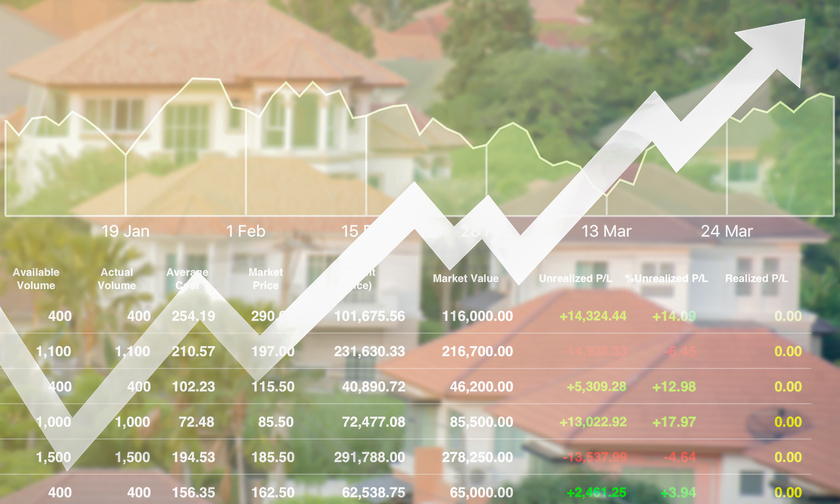
(Disclaimer: The content of this article is not intended as financial or investment advice but rather information for educational purposes only.)
Presidential elections can be among the most pivotal moments for the American economy as a whole, especially for major investments like real estate and housing. However, presidential elections are not the only significant happenings in a given year, and there are a number of factors that can affect the housing market that must be considered when such serious investments are at play.
How do presidential elections affect the housing market?
Market Uncertainty and Investor Sentiment
Many presidential candidates promote potential policy changes as part of their campaigns, which leads to uncertainty for many investors, regardless of their portfolio.
According to this Investopedia survey, 61% of investors cite the 2024 presidential election as the top reason they are worried about their investments’ performance. For real estate investors, this anxiety could lead to more cautious behavior among buyers and sellers.
Buyers may delay purchases due to fears of potential policy changes that could impact housing affordability, interest rates, or economic stability. On the other hand, sellers might hold off listing properties, anticipating changes in market conditions post-election.
Impact of Election Results on Housing Policies
The election outcome can significantly impact housing policies and, as a result, the housing market. Different administrations prioritize different aspects of housing, from affordable housing initiatives to deregulation efforts to boost market activity.
For example, a government focused on affordable housing may implement policies that increase the availability of housing subsidies or expand access to low-cost financing. Such measures can boost demand for housing and support price growth.
On the other hand, an administration focused on deregulation might streamline the approval process for new developments, potentially increasing housing supply and affecting prices.
Investors need to stay informed about the housing policies candidates propose and consider how these policies might impact their investments. Understanding the potential implications of different policy directions can help investors make strategic decisions and mitigate risks associated with political changes.
Historical Trends in Election Years
According to experts at Bankrate and their analysis of the S&P CoreLogic Case-Shiller Home Price Index, election years have little impact on the housing market, and what effect they did have may actually be positive. However, like most things, nuance is required to see the whole picture.
Presidential elections were rarely the only significant factor during those years, with things like wars, unemployment, and inflation also contributing.
This sentiment is also echoed in other markets, with experts from Fidelity saying that market fundamentals are more likely to impact any type of investment than a presidential election.
Long-Term Considerations for Investors
Regardless of what short-term fluctuations investors may see in the housing market, real estate investors should also focus on long-term trends.
Investors who maintain a long-term perspective and focus on fundamental market drivers, such as supply and demand dynamics, economic growth, and demographic trends, will likely be better positioned to navigate election-related uncertainties.
“Any presidential election will probably not have any long-term effect on the housing market,” says IRA Title Pro President James Schlimmer. “Significant policy changes can take months or even years to put in place, and once the short-term uncertainty wears off, the housing market will stabilize once again.”
By focusing on sound investment principles and staying informed about broader economic trends, investors can mitigate the impact of election-year volatility and make informed decisions that support their investment goals.
Strategies for Navigating the Election-Year Housing Market
For real estate investors looking to navigate the housing market during an election year, several strategies can help mitigate risks and capitalize on opportunities:
1. Stay Informed: Stay updated on political developments, proposed housing policies, and economic indicators. Understanding the potential impact, even if it is only short-term, can help investors make more informed decisions.
2. Diversify Investments: Diversifying real estate portfolios across different regions and property types can reduce exposure to election-related volatility.
3. Focus on Fundamentals: Emphasize long-term investment principles and market fundamentals. While short-term fluctuations are inevitable, properties in strong economic areas with solid demand and supply dynamics will likely perform well over time.
4. Timing Transactions: Consider the timing of property transactions. Some investors may delay major decisions until after the election to reduce uncertainty, while others might find opportunities in pre-election market slowdowns.
5. Risk Management: Implement risk management strategies, such as being prepared to shift investments due to interest rate changes or securing financing before potential policy shifts.
Conclusion
By adopting strategies to navigate election-year markets and focusing on sound investment principles, investors can mitigate risks and capitalize on opportunities presented by political changes, regardless of the short- or long-term effects. Understanding the connection between elections and the housing market is crucial for making informed decisions and achieving successful investment outcomes in an ever-evolving economic landscape.









